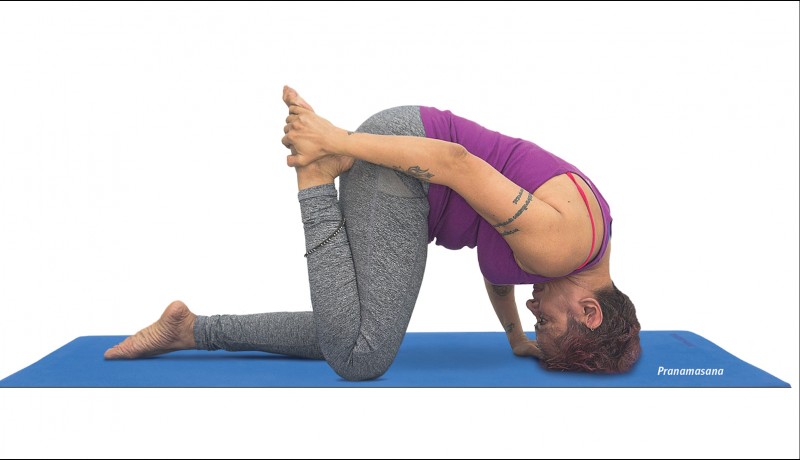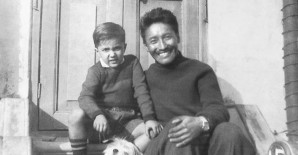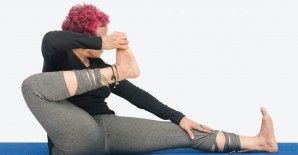
Columns

Shameem Akthar recommends a systematic yoga practice to keep hearing loss at bay
The causes of hearing loss can be many, and are best addressed by a medical expert. However, a systematic and regular practice of yoga keeps the overall body-mind complex fit and youthful. What’s more, yoga helps deal with the aftermath of hearing loss, which can include depression, anxiety and isolation, by stimulating the mind and easing the person back into the social circuit.
Hearing loss may be caused by continuous exposure to high-volume noise, as happens in some jobs or in certain areas (like homes near airports). It can also be caused by sudden exposure to noises, an infection of the middle ear, or even a build-up of wax.
In yoga, the victory breath (ujjayi pranayama) is seen as the most healing. Combine it with the humming bee (bhramari), which is also healing. Mudras such as ‘destroying the ether element’ (akash nashaak) and ‘destroying the air element’ (vata nashaak) are advised for long periods. For akash nashaak, press down your middle finger with the thumb, for each hand. For vata nashaak, press down your index and middle finger with the thumb, for each hand. These mudras have to be done for at least half hour daily for impact. You can split up the time by including them during pranayama and meditation, or even while resting or watching TV, though their impact is more when done with focus.
Most inversions are seen as anti-ageing and help prevent age-related loss of the senses. However, in case of ear ache or infection, inversions must be avoided till fully healed. Some gentle inversions include the shoulder stand (sarvangasana) and psychic union pose (viparitakarani mudra). Forward bends have a similar impact; they flush the head with blood and keep the systems there—including sense organs—young and toned. However, these should also be avoided in acute cases. Some gentle forward bends include the down dog (adhomukha svanasana), child pose (balasana), hare pose (shashankasana) and puppy dog pose (svanasana).
YOGIC MOVES
Prayer pose, with leg lifted (pranamasana)
Sit on your knees. Lean forward to place your palms under the shoulders. Gently place your crown between the palms curling the neck lightly so there is a neck lock. The knees should be walked forward a bit, to create a taut tabletop position of the back. Breathe normally throughout. Ensure you are not loading your neck but using the palms to support it. At this point, fold the right leg at the knee. Push the heel of that foot into the right hip. If the balance is comfortable, reach your right hand behind you to grasp the right ankle. Hold for a while. (This is an advanced variation to spice up your practice and may be learnt gradually and in various stages as suggested.) Release the hold at the ankle. Repeat for the other leg. Caution: Avoid in case of acute ear infection. Benefits: This pose encourages blood flow to the entire head, toning the organ systems it houses. This de-stressing pose balances the metabolism, encourages healing, and opens up the neck and upper back.
KNOW YOUR KRIYA
Shanmukhi mudra
Sit in any meditative posture with your eyes closed. Place each of your fingers as suggested—the thumb to shut the ear, index finger over eyelid, middle finger on the nostril, ring finger over the top of the upper lip, little finger below the lower lip. The idea is that each of the fingers is acting as a gate, shutting down stimuli from these sense organs and turning the mind inwards. This may be tried as part of certain pranayamas, like the humming bee (bhramari), or done as a standalone meditative practice. If the latter, it must be done ideally when it is very quiet, like early morning or towards night. It is difficult for a beginner to do this for long, because the hands may start hurting. So build up your stamina gradually by doing this for a few minutes.
Point to note: You are said to hear inner sounds, perhaps of the body, such as gurgles, swallowing, heartbeat or pulse beat. Rishis have described these lyrically but instead of being influenced by that, just allow your experiences to arise spontaneously. Benefits: This kriya is used to fine-tune the senses and allow the introversion of the mind without being intimidated by it. It develops mental stamina and is suggested as therapy for issues relating to the sense organs.
Shameem Akthar is a Mumbai-based yoga acharya. If you have any queries for her, mail us or email at contact.us@harmonyindia.org. (Please consult your physician before following the advice given here)
Photos: Haresh Patel Featured in Harmony — Celebrate Age Magazine October 2018
you may also like to read
-
Mental workout
Mukul Sharma tells you how to keep those grey cells ticking Everyone will ultimately lose his or her brain….
-
Helpline
Dr Harshbir Rana answers your queries on personal and social issues related to ageing, elder care and intergenerational relationships ….
-
Off the cuff
Raju Mukherji pays tribute to his first hero, Tenzing Norgay, an exemplary mountaineer Darjeeling, 1955. Dr ‘Pahari’ Guha Mazumdar….
-
Yoga RX
Shameem Akthar shows ways to control debilitating ankle pain through regular practice Ankle pain is so common and prevalent….








